Results 11,621 to 11,630 of 12089
Thread: Anandtech News
-
01-23-23, 02:11 PM #11621
Anandtech: ASRock DeskMeet B660 Review: An Affordable NUC Extreme?
ASRock was one of the earliest vendors to cater to the small-form factor (SFF) PC market with a host of custom-sized motherboards based on notebook platforms. Despite missing the NUC bus for the most part, they have been quite committed to the 5x5 mini-STX form-factor introduced in 2015. ASRock's DeskMini lineup is based on mSTX boards and has both Intel and AMD options for the end-user. While allowing for installation of socketed processors, the form-factor could not support a discrete GPU slot. Around 2018, Intel started making a push towards equipping some of their NUC models with user-replaceable discrete GPUs. In order to gain some market share in that segment, ASRock introduced their DeskMeet product line early last year with support for socketed processors and a PCIe x16 slot for installing add-in cards. Read on for a detailed analysis of the features, performance, and value proposition of the DeskMeet B660 - a 8L SFF PC based on the Intel B660 chipset, capable of accommodating Alder Lake or Raptor Lake CPUs.
More...
-
01-26-23, 03:56 AM #11622
Anandtech: SK hynix Intros LPDDR5T Memory: Low Power RAM at up to 9.6Gbps
In a bit of a surprise move, SK hynix this week has announced a new variation of LPDDR5 memory technology, which they are calling LPDDR5T. Low Power Double Data Rate 5 Turbo (LPDDR5T) further ramps up the clockspeeds for LPDDR5-type memory, with SK hynix stating that their new memory will be able to clock at high as 9.6Gbps/pin, 13% faster than their top-bin 8.5Gbps LPDDR5X. According to the company, the memory is sampling now to partners as a 16GB part, with mass production set to begin in the second half of this year.
SK hynix is positioning LPDDR5T as an interim memory technology to cover the gap between LPDDR5X and the future development of LPDDR6, offering what amounts to a half-step up in memory bandwidth for customers who would like something faster than what contemporary LPDDR5X memory is capable of. That standard, as it currently stands, only goes to 8533Mbps, so any LPDDR5-type memory clocked higher than that is technically outside of the official JEDEC specification. Still, SK hynix’s announcement comes a bit unexpectedly, as while it’s not unusual for memory manufacturers to announce new technologies ahead of the industry’s standardization body, there hadn’t been any previous chatter of anyone coming to market with a further evolution of LPDDR5.
At this point the technical details on the new memory are limited. SK hynix was able to confirm that LPDDR5T will operate at the same voltages as LPDDR5X, with a VDD voltage range of 1.01v to 1.12v (nominally 1.05v) and a VDDQ of 0.5v. Coupled with that, as previously mentioned the new memory will max out at a data rate of 9.6Gbps/pin, which for a 64-bit part would mean a full data rate of 76.8GB/second. Otherwise, at this point all outward appearances are that LPDDR5T is just higher clocked LPDDR5X, given a new name since its data rate is outside the scope of LPDDR5X.
But whatever LPDDR5T is (or isn’t), SK hynix tells us that they intend to make a proper JEDEC standard of it. The company is already working with JEDEC on standardization of the memory technology, and while this doesn’t guarantee that other memory vendors will pick up the spec, it’s a sign that LPDDR5T isn’t going to be some niche memory technology that only ends up in a few products. This also means that the rest of the pertinent technical details should be published in the none too distant future.LPDDR Generations LPDDR4 LPDDR4X LPDDR5 LPDDR5X LPDDR5T
(Provisional)Max Density 64 Gbit 32 Gbit 32 Gbit? Max Data Rate 4266Mbps 6400Mbps 8533Mbps 9600Mbps Channels 2 1 4? Width x32 (2x x16) x16 x64 Banks
(Per Channel)8 8-16 16? Bank Grouping No Yes Yes? Prefetch 16n 16n 16n? Voltage 1.1v Variable
Nominal: 1.05v
Max: 1.1vVariable
Nominal: 1.05v
Max: 1.12vVddq 1.1v 0.6v 0.5v
In the meantime, for their initial LPDDR5T parts, SK hynix is going to be shipping a multi-die chip in a x64 configuration. According to the company’s PR office, they’re producing both 12Gb and 16Gb dies, so there’s a potential range of options for package densities, with the 16GB (128Gbit) package being the largest configuration. All of this RAM, in turn, is being built on the company’s 1anm process, which is their fourth-generation 10nm process using EUV, and paired with High-K metal gates (HKMG).
SK hynix’s decision to go with only a x64 package out of the gate is a notable one, since these higher density packages are typically limited to use in high-end smartphones and other high-performance devices (laptops, servers, etc), underscoring the intended market. For their part, SK hynix has stated that they expect the application of LPDDR5T to “expand beyond smartphones to artificial intelligence (AI), machine learning and augmented/virtual reality (AR/VR)”. LPDDR memory has been seeing increasing use in non-mobile products, so this doesn’t come as a surprise given the high-end nature of the technology. Server hardware vendors in particular come to mind as potential customers, since those products can easily absorb any increased power consumption from the higher memory clockspeeds.
Wrapping things up, SK hynix says that they expect to begin mass production of LPDDR5T in the second half of this year. So depending on just when in the year that production begins, and when their downstream customers implement the new RAM, it could begin showing up in products as easy as the end of this year.
More...
-
01-26-23, 05:32 PM #11623
Anandtech: Intel Reports Q4 2022 and FY 2022 Earnings: 2022 Goes Out on a Low Note
Kicking off yet another earnings season, we once again start with Intel. The reigning 800lb gorilla of the chipmaking world is reporting its Q4 2022 and full-year 2022 financial results, closing the book on what has turned an increasingly difficult year for the company. As Intel’s primary client and datacenter markets have reached saturation on the back of record sales and spending is slowing for the time being, Intel is seeing significant drops in revenue for both markets. These headwinds, though not unexpected, have broken Intel’s 6-year streak of record yearly revenue – and sent the company back into the red for the most recent quarter.
Starting with quarterly results, for the fourth quarter of 2022, Intel reported $14.0B in revenue, which is a major, 32% decline versus the year-ago quarter. With Intel coming off of what was their best Q4 ever just a year ago, as the saying goes: the higher the highs, the lower the lows. As a result, Q4’22 will go down in the books as a money-losing quarter for Intel (on a GAAP basis), with the company losing $661M for the quarter, a 114% decline in net income. Overall, Intel’s revenue for the quarter was low end of their already conservative forecasted range.
More...
-
01-26-23, 05:32 PM #11624
Anandtech: Intel NUC 12 Pro Wall Street Canyon Kits Review: Alder Lake in UCFF Avatar
Intel introduced the ultra-compact form-factor in 2012 to reinvigorate the PC market. The incredible success of the product line has now resulted in the brand name propagating to other novel system configurations and form factors. The introduction of the mainstream Alder Lake NUCs last year - the NUC 12 Pro (Wall Street Canyon) - marked a decade-long journey for the original design. As part of bringing out the versatility of the form-factor and its evolution over the last ten years, Intel sampled three top-end Wall Street Canyon NUCs targeting different market segments - the NUC12WSKi7 for traditional business and consumer users, the NUC12WSKv7 in a slightly more eye-catching designer chassis for business and enterprise deployments, and the NUC12WSBi70Z in a rugged fanless case for IoT / Edge applications in industrial environments. Read on for a comprehensive analysis of the mainstream NUC 12 Pro mini-PC platform.
More...
-
01-27-23, 10:22 AM #11625
Anandtech: The Intel Core i9-13900KS Review: Taking Intel's Raptor Lake to 6 GHz
Back at Intel's Innovation 2022 event in September, the company let it be known that it had plans to release a '6 GHz' processor based on its Raptor Lake-S series of processors. Though it didn't come with the same degree of fanfare that Intel's more imminently launching 13900K/13700K/13600K received, it put enthusiasts and industry watchers on notice that Intel still had one more, even faster Raptor Lake desktop chip waiting in the wings.
Now a few months later, Raptor Lake's shining moment has arrived. Intel has launched the Intel Core i9-13900KS, a 24-core (8x Perf + 16x Efficiency) part with turbo clock speeds of up to 6 GHz. A mark, which until very recently, was unprecedented without the use of exotic cooling methods such as liquid nitrogen (LN2).
In what is likely to be one of the last in a wide range of Raptor Lake-S SKUs to be announced, Intel has seemingly saved its best for last. The Intel Core i9-13900KS is the faster and unequivocal bigger brother to the Core i9-13900K, with turbo clock speeds of up to 6 GHz while maintaining its halo presence with a 200 MHz increase on both P-core and E-core base frequencies.
Intel's focus and strategy on delivering halo-level processors in limited supply is something that's become a regular part of their product stack over the last few years. We've previously seen the Core i9-9900KS (Coffee Lake) and i9-12900KS (Alder Lake), which were relative successes in showcasing each Core architecture at their finest point. The Core i9-13900KS looks to follow this trend, although it comes as we've reached a time where power efficiency and costs are just a few widely shared concerns globally.
Having the best of the best is somewhat advantageous when there's a need for cutting-edge desktop performance, but at what cost? Faster cores require more energy, and more energy generates more heat; 6 GHz for the average consumer is finally here, but is it worth taking the plunge? We aim to find out in our review of the 6 GHz Core i9-13900KS.
More...
-
01-28-23, 12:19 AM #11626
Anandtech: Seagate Confirms 30TB+ HAMR HDDs in Q3, Envisions 50TB Drives in a Few Yea
Seagate this week confirmed plans to launch the industry's first 30+ TB hard drive that uses its heat assisted magnetic recording (HAMR) technology, as well as reaffirming its commitment to release HDDs with capacities of 50 TB and higher in a few years. But before this happens, the company will release 22 TB and 24 TB HDDs that will rely on perpendicular magnetic recording (PMR) and shingled magnetic recording (SMR) technologies, respectively.
One More Play for PMR and SMR
Various energy assisted magnetic recording methods, such as HAMR, will be used for next generations of hard drives for years to come. But while PMR is running out of steam, it is still evolving. Seagate has managed to increase areal density enabled by its PMR + TDMR platform by around 10%, enabling 2.2 TB 3.5-inch HDD platters and thus 22 TB hard drives featuring 10 of such disks. Furthermore, by using shingled recording, these drives can have their capacity stretched to 22 TB.
These 22 TB and 24 TB Seagate Exos drives will likely be drop-in compatible with existing cloud datacenter hardware as well as infrastructure, and should not require extensive validation and certification procedures, unlike brand-new HAMR HDDs. As a result, Seagate's customers will be able to deploy such hard drives fairly quickly and increase storage density and storage capacity of their datacenters.
Seagate is now ramping up production of its 22 TB hard drives for datacenters, so expect the company to start their shipments shortly. Seagate is not disclosing when exactly it will officially launch its 22 TB and 24 TB parts, but we would expect them to arrive before the company introduces its HAMR-based HDDs; so think Q1 or Q2.
30+ TB HDDs Coming in Q3
In fact, Seagate has been shipping HAMR HDDs to select customers for evaluation as well as inside its own Lyve storage systems for a while, but those drives featured capacities akin to those of PMR/CMR HDDs and were not available in huge volumes. With Seagate's 2nd generation HAMR platform, the company is going after higher volumes, but it took the company quite some time to get there. The first pre-qualification high-capacity HAMR-based HDDs are only just now getting ready to head out to customers for evaluation.
"We are meeting or exceeding all product development milestones and reliability metrics, and we will be shipping pre-qualification units to key cloud customers in the coming weeks," said Dave Mosley, chief executive of Seagate.
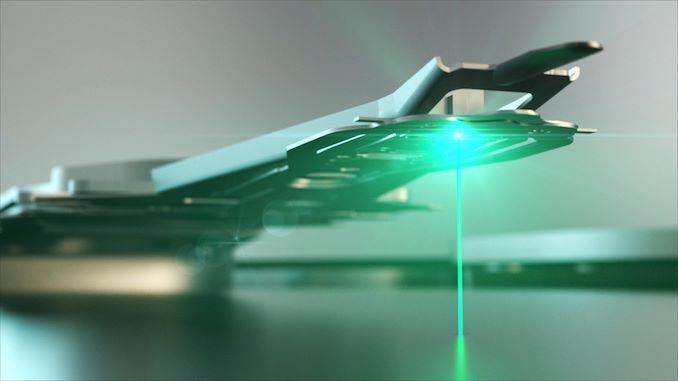
Meanwhile, commercial HAMR hard drives with capacities of 30TB or higher will ship in third quarter of this year, which is in-line with what Seagate promised last year.
"As a result of this progress, we now expect to launch our 30-plus terabyte platform in the June quarter, slightly ahead of schedule," said Mosley. "The speed of the initial HAMR volume ramp will depend on a number of factors, including product yields and customer qualification timelines."
Initially Seagate will only offer its HAMR technology for its highest-capacity offerings for hyperscale datacenters, whom need maximum storage density and are willing to pay premium for the drives and for supporting infrastructure. As yields of HAMR-supporting media and the appropriate read/write heads increase, the technology will be applied for drives with lower capacities in a bid to cut down their production costs (fewer disks and heads, lower the costs). This is not going to happen overnight though, as the company needs to increase yields of HAMR drive components and the HDDs themselves to a comfortable level.
"I think this year, [the volume of HAMR HDDs] will probably still be relatively low," said the head of Seagate. "Then the faster we can get the yields and scrap and all the costs that we can control down on the heads and media, then the faster we'll be accelerating. I think that will happen in calendar year 2024 and calendar year 2025 will just continue to accelerate. The highest capacity points will be addressed, but also these midrange capacity points."
50+ TB HDDs Will Be Here in a Few Years
Seagate's launch of its first mass market 30+ TB HAMR hard drives platform will mark a milestone for the company and the whole industry. But apparently the company has another breakthrough to share at this time. The firm said this week that it had created 5 TB platters for 3.5-inch hard drives, which presumably entails new media, new write heads, and new read heads.
"It was nearly four years ago to the day that I first shared our lab results demonstrating 3 TB per disk capacities," explained Mosley. "And today, we have demonstrated capacities of 5 TB per disk in our recording physics labs."
For now, these platters are used on spinstands for evaluation and testing purposes, but platters like these will allow for 50 TB HDDs a few years down the line. Seagate's roadmap indicates that such hard drives will hit the market sometimes in calendar 2026.
It is unclear how thin the new platters are. But following current trends of nearline HDD evolution — increasing areal density and increasing number of platters per hard drive — it's not outside the realm of possibility that Seagate will find ways to integrate even more than 10 platters in future drives. In which case Seagate would be able to hit drive sizes even larger than 50 TB.
In any case, with ~3 TB platters in production, samples of ~30 TB HDDs shipping to customers, and 5 TB platters demonstrated in the lab, Seagate's HAMR roadmap seems to look quite solid. Therefore, expect hard drives to gain capacities rapidly in the coming years.
More...
-
01-29-23, 02:25 PM #11627
Anandtech: ASRock Industrial NUCS BOX-1360P/D4 Review: Raptor Lake-P Impresses, plus
Low-power processors have traditionally been geared towards notebooks and other portable platforms. However, the continued popularity of ultra-compact form-factor desktop systems has resulted in UCFF PCs also serving as lead vehicles for the latest mobile processors. Such is the case with Intel's Raptor Lake-P - the processor SKUs were announced earlier this month at the 2023 CES, and end-products using the processor were slated to appear in a few weeks. Intel is officially allowing its partners to start selling their products into the channel today, and also allowing third-party evaluation results of products based on Raptor Lake-P to be published.
ASRock Industrial announced their Raptor Lake-P-based NUC clones as soon as Intel made the parts public. With the new platform, the company decided to trifurcate their offerings - a slim version (sans 2.5" drive support) with DDR4 SODIMM slots in the NUCS BOX-13x0P/D4, a regular height version with 2.5" drive support in the NUC BOX-13x0P/D4, and a slightly tweaked version of the latter with DDR5 SODIMM slots in the NUC BOX-13x0P/D5. The NUCS BOX-1360P is the company's flagship in the first category, and the relative maturity of DDR4-based platforms has allowed them to start pushing the product into the channel early.
ASRock Industrial sampled us with a NUCS BOX-1360P/D4 from their first production run. We expected a run of the mill upgrade with improvements in performance and power efficiency. In the course of the review process, we found that the system allowed control over a new / key Raptor Lake-P feature that Intel hadn't even bothered to bring out during their CES announcement - in-band ECC. Read on for a comprehensive look at Raptor Lake-P's feature set for desktop platforms with detailed performance and power efficiency analysis.
More...
-
01-31-23, 01:21 PM #11628
Anandtech: Samsung Portable SSD T7 Shield 4TB Review: IP65 PSSD Gets a Capacity Upgra
Samsung has been enjoying market success with their lineup of portable SSDs, starting with the T1 back in 2015. The company has been regularly updating their PSSD lineup with the evolution of different high-speed interfaces as well as NAND flash technology.
In early 2022, the company launched the Portable SSD T7 Shield, a follow-up to the Portable SSD T7 (Touch) introduced in early 2020. Introduced in models with capacities up to 2TB, the ruggedness / IP65 rating of the T7 Shield was advertised as a selling point over the regular Portable SSD T7 and T7 Touch. The company launched a 4TB version in this lineup in mid-January for the EU market. Samsung is officially bringing over the new capacity SKU to the North American market today. Read on for a comprehensive look at the performance and value proposition of the Portable SSD T7 Shield 4TB.
More...
-
02-01-23, 05:32 PM #11629
Anandtech: Western Digital Unveils Dual Actuator Ultrastar DC HS760 20TB HDD
Without much fanfare, Western Digital this week introduced its first dual actuator hard drive, a 20TB drive that is designed to offer SATA SSD-like sequential read/write performance. The Ultrastar DC HS760 drive is meant to increase IOPS-per-terabyte performance for hyperscale cloud datacenters and will compete against Seagate's dual actuator Exos 2X family of HDDs. Meanwhile, Western Digital's offering will also mark the latest deployment of the company's OptiNAND technology.
The dual actuator Ultrastar DC HS760 HDD builds upon the company's single actuator Ultrastar DC HC560 drive which uses nine 2.2TB ePMR (energy-assisted perpendicular magnetic recording) platters. But in the case of the HS760, WD adds a second actuator to the drive, essentially splitting it up into two quasi-independent drives with each half having domain over 4.5 platters (9 surfaces). By doubling the number of indepent actuators, Western Digital claims that the HS760 is able to double sequential read/write speeds and increase random read/write performance by 1.7 times versus single actuator drives.
While the company yet has to upload a datasheet for its dual actuator HDD, we are looking at sequential throughput rates of around 582 MB/s, which interestingly enough is a tad faster than SATA SSDs, which max out the SATA-III at around 550 MB/s. Though it's worth noting that, as is typical for enterprise-focused hard drives, Western Digital is using Serial Attached SCSI (SAS) here, so it won't be possible to hook the drive up to a SATA host.
Since the two actuators inside Western Digital's Ultrastar DC HS760 HDD work independently, the unit presents itself as two independent logical unit number (LUN) devices, and both logical hard drives are independently addressable. This means that datacenters will have to introduce certain software tweaks (i.e., these are not drop-in compatible with infrastructure designed for single actuator HDDs). But for the added complexity on the software/configuration side of matters, data center operators are being promised not only the aforementioned higher performance levels, but also a setup that is 37% more energy efficient in terms of IOPS-per-Watt than two 10TB devices. In essence, hyperscalers are getting many of the benefits of having two current-generation 10TB HDDs, but in a product that takes up the space of just a single drive.
The key advantage of Western Digital's Ultrastar DC HS760 20TB over hard drives with one actuator of the same capacity is significantly increased performance on an IOPS-per-TB basis. Typical enterprise-grade 3.5-inch HDDs with capacities between 8TB and 16TB offer random performance of 6 – 10 IOPS per terabyte, which is enough to ensure quality-of-service of datacenters. But at 20TB, random performance drops to less than 5 IOPS per terabyte, which requires hyperscalers to introduce various mitigations to ensure that these drives meet their QoS requirements.
Such mitigations either include implementing command queuing and latency-bounded I/O (LBIO) in firmware, usage of drives of lower capacity, reducing usable capacity per drive, or even adding sophisticated caching methods. All of these methods either increase upfront costs and/or total-costs-of-ownership. Therefore, hyperscalers need drives that can physically increase their IOPS-per-terabyte performance and dual actuator HDDs are a natural answer. As an added bonus, these hard drives also offer two times higher sequential read/write speeds than single-actuator HDDs.
As noted above, Western Digital is not the only company to offer dual actuator HDDs as Seagate has been doing this for years now. But Western Digital's Ultrastar DC HS760 has an advantage over rivals that comes in the form of its OptiNAND technology, which is an integrated iNAND UFS embedded flash drive (EFD) coupled with firmware tweaks. OptiNAND is meant to increase capacity, reliability, and performance of HDDs and while Western Digital yet has to disclose performance numbers of its Ultrastar DC HS760 drives, it is at least evident that its 20TB drive will offer more capacity than Seagate's competing Exos 2X18 18TB drive.
Otherwise, given that the HS760 is aimed primarily at hyperscalers, Western Digital is treating the drive as a product for a limited audience. Although the drive is listed on the company's website, for example, there is no public pricing listed, and buyers will have to make a sales inquiry. So the actual unit pricing on the new drive is going to vary some, depending on things like order volumes and agreements between Western Digital and its clients.
Western Digital's Ultrastar DC HS760 HDD will be covered with a five-year warranty with each LUN rated for a 500 TB annual workload.
More...
-
02-02-23, 07:09 AM #11630
Anandtech: AMD’s Ryzen 7000X3D Chips Get Release Dates: February 28th and April 6th,
AMD today has announced the launch date and prices for its eagerly anticipated Ryzen 7000X3D series processors. Aimed primarily at gamers, the company’s first L3 V-Cache equipped Ryzen 7000 processors will begin rolling out on February 28th, when the Ryzen 9 7950X3D and Ryzen 9 7900X3D go on sale for $699 and $599 respectively. This will be followed up by the Ryzen 7 7800X3D a bit over a month later, when it goes on sale for $449 on April 6th.
First announced to great fanfare during AMD’s CES 2023 keynote (and teased well before that), the Ryzen 7000X3D chips will be AMD’s second generation of consumer chips employing the company’s novel 3D stacked V-Cache technology. V-Cache allows AMD to stack a 64MB L3 cache die on top of their existing CCDs in order to expand the total L3 capacity of a Zen 3/4 CCD, going from 32MB to 96MB. And in the case of multi-CCD designs such as the Ryzen 9 7950X, bringing the total, chip-wide L3 cache pool to 128MB.
Following the successful trial of the technology in the consumer space with AMD’s original Ryzen 7 5800X3D, which was released to positive acclaim back in the spring of 2022, AMD has developed a much broader lineup of V-Cache equipped Ryzen chips for this generation. This includes not only the 5800X3D’s direct successor, the 8 core Ryzen 7 7800X3D, but also, for the first time, chips employing multiple CCDs. These are the Ryzen 9 7900X3D and 7950X3D, which will offer 12 and 16 CPU cores, respectively.AMD Ryzen 7000X/X3D Series Line-Up AnandTech Cores
ThreadsBase
FreqTurbo
FreqL3
CacheTDP Price
(Street)Release
DateRyzen 9 7950X3D 16C / 32T 4.2 GHz 5.7 GHz 128 MB 120W $699 02/28/23 Ryzen 9 7950X 16C / 32T 4.5 GHz 5.7 GHz 64 MB 170W $583 - Ryzen 9 7900X3D 12C / 24T 4.4 GHz 5.6 GHz 128 MB 120W $599 02/28/23 Ryzen 9 7900X 12C / 24T 4.7 GHz 5.6 GHz 64 MB 170W $444 - Ryzen 7 7800X3D 8C / 16T 4.2 GHz 5.0 GHz 96 MB 120W $449 04/06/23 Ryzen 7 7700X 8C / 16T 4.5 GHz 5.4 GHz 32 MB 105W $299 - Ryzen 7 5800X3D 8C / 16T 3.4 GHz 4.5 GHz 96 MB 105W $323 -
Interestingly, AMD has gone for a non-homogenous design for these multi-CCD parts – rather than giving both CCDs V-Cache, AMD is only outfitting one of the CCDs with the extra L3 cache. The other CCD will remain a plain Zen 4 CCD, with its integrated 32MB of L3 cache. The unbalanced design, besides allowing AMD to control the costs of what’s still a relatively expensive technology to implement, will allow AMD to offer something close to the best of both worlds for their multi-CCD parts. The V-Cache equipped Zen 4 CCDs will offer 6 or 8 CPU cores backed by the massive L3 pool, for tasks that benefit from the larger cache size, while the vanilla Zen 4 CCDs will be unencumbered by the V-Cache, allowing them to clock higher for pure throughput workloads that wouldn’t benefit from the extra cache.
As with the original 5800X3D, AMD is aiming these chips at gamers in particular, as the complex, heavy-dataset nature of video games means they often benefit from having additional L3 cache on-hand. The 5800X3D was, depending on the game, around 15% faster than its vanilla Ryzen counterpart – at least so long as it wasn’t GPU limited. AMD is being a bit more coy this time around on making apples-to-apples comparisons against their regular Ryzen 7000 chips, so for now the only official performance figures available from AMD are pitting the chips against the 5800X3D. In lieu of that, a 15% improvement is a reasonable baseline given that the cache sizes haven’t changed in the last generation, but we’ll definitely want to take a closer look at the final chips to see if the additional L3 cache is as beneficial to Zen 4 as it was for Zen 3.
Back at their CES 2023 keynote, AMD announced the specifications for two-and-a-half of the chips, as well as an undetailed February launch date. With today’s announcement, AMD is finally filling in the rest of the details, as well as confirming that only part of the product stack is going to make that February launch date.
As previously noted, the Ryzen 9 7950X3D and Ryzen 9 7900X3D both launch on February 28th. The 16 core 7950X3D will hit the streets with a $699 price tag, while the 12 core 7900X3D will intro at $599. At current street prices, this represents roughly a $100 to $150 premium over the chips’ regular counterparts, with the 7950X selling for around $583, and the 7900X selling for around $444. Prices on AMD’s top AM5 chips have come down a decent bit since their 2022 launch, so the new X3D SKUs are coming in at similar launch prices as their non V-Cache counterparts. Put another way, whereas $699 would get you a 16 core 7950X in September, come February it will get you the same chip with an additional 64MB of L3 cache.
Other than benchmarks, at this point the only detail we don’t have on the 7950X3D and 7900X3D are the clockspeeds for the V-Cache equipped CCDs. AMD’s quoted turbo clockspeeds are for the vanilla CCD, so it’s unclear just how much clockspeeds have been lowered for the V-Cache CCD. But taking a hint from AMD’s sole single CCD X3D part, the 7800X3D, we see that part has a top clockspeed of just 5.0GHz. So we’d expect something similar for the V-Cache CCDs on the Ryzen 9 parts.
Speaking of the Ryzen 7 7800X3D, we finally have the full specifications on AMD’s most straightforward X3D part. Back in January AMD hadn’t locked down the base clockspeeds on this part, but as of today we finally have the answer: 4.2GHz. The chip will, in turn, be able to turbo as high as 5.0GHz as previously noted.
The cheapest of the Z3D parts, with a price tag of $449, the 7800X3D will also be the laggard of the group, with the chip not launching until April 6th. AMD has not explained the gap in launch dates, but it’s reasonable to assume that AMD is prioritizing the assembly and shipping of their more expensive Ryzen 9 SKUs. In any case, at current street prices the 7800X3D will carry a $150 premium over the $299 7700X, making it a full 50% more expensive, assuming these street prices hold through April. This happens to be the same price the 5800X3D launched at, so AMD is technically just holding the line here, but it does underscore how price cuts on the rest of the Ryzen 7000 lineup have made the standard chips very competitive on a price/performance basis.
In any case, we’ll have more on AMD’s first V-Cache equipped Zen 4 chips later this month. Besides taking an in-depth look at the performance improvements brought about by the larger L3 cache, the other major factor driving performance is going to be the Windows thread scheduler. As this is AMD’s first asymmetric Ryzen CPU, it will be up to Windows and AMD’s chipset driver to figure out which CCD to place threads on for the 7950X3D/7900X3D. So this month’s launch is going to require that AMD’s hardware and software offerings are in sync in order for the company to make a good first impression.
More...
Thread Information
Users Browsing this Thread
There are currently 21 users browsing this thread. (0 members and 21 guests)





 Quote
Quote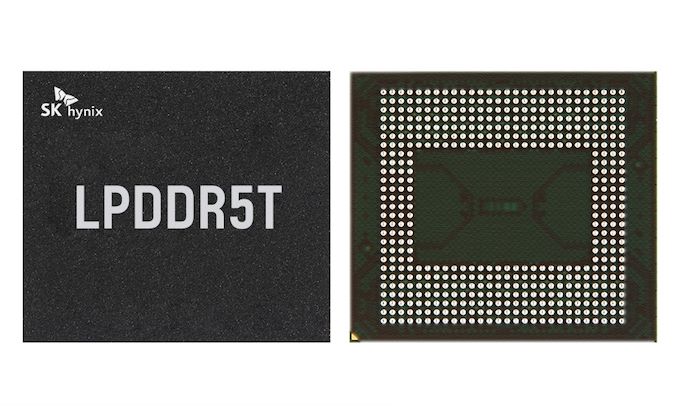
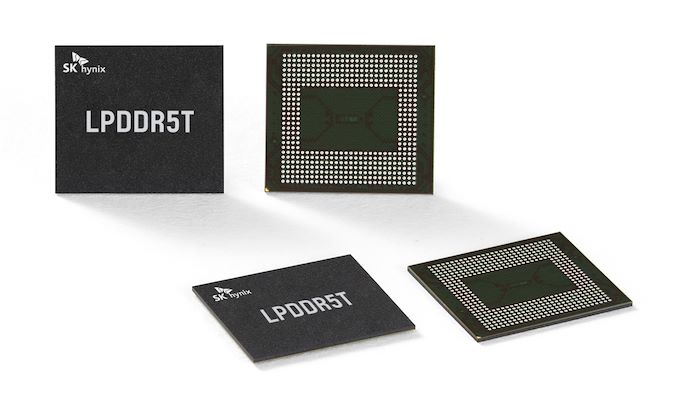
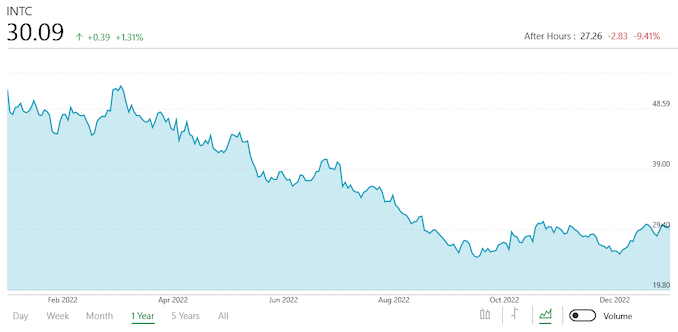
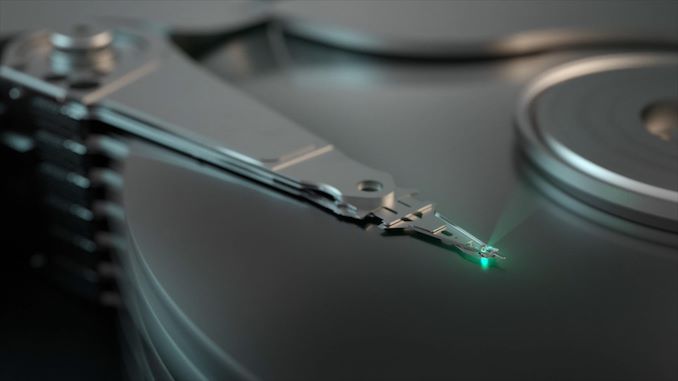
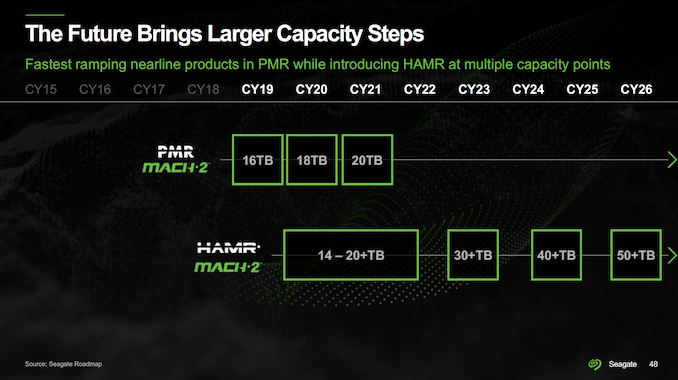
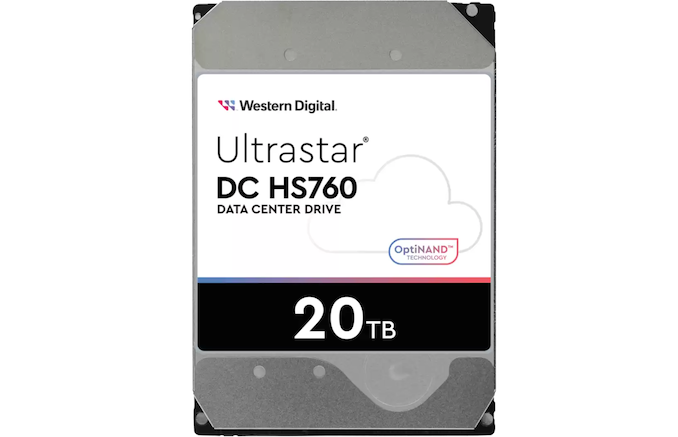
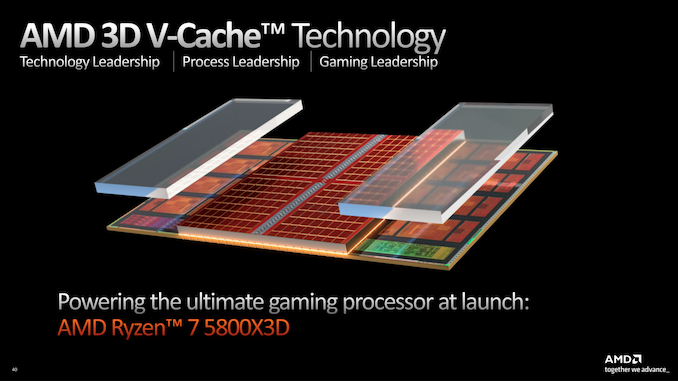
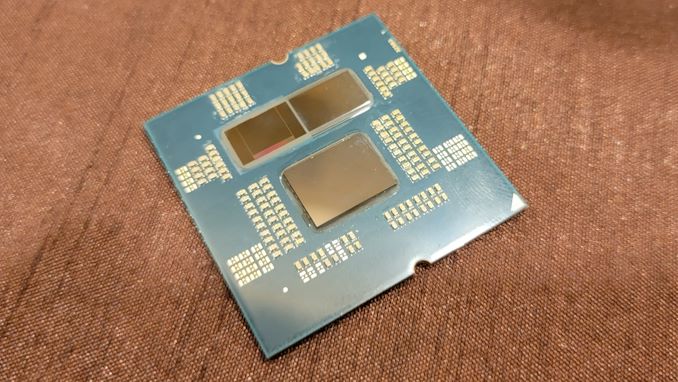
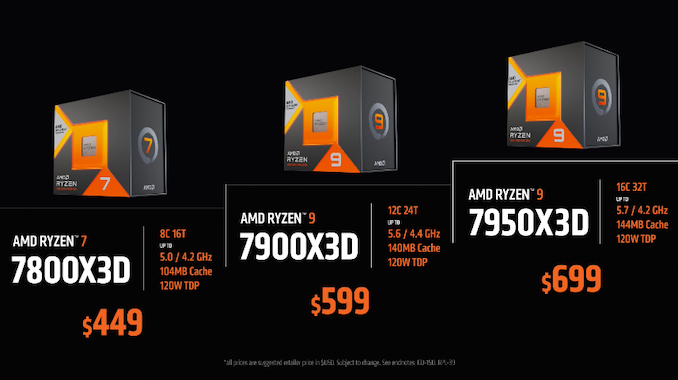
















Bookmarks